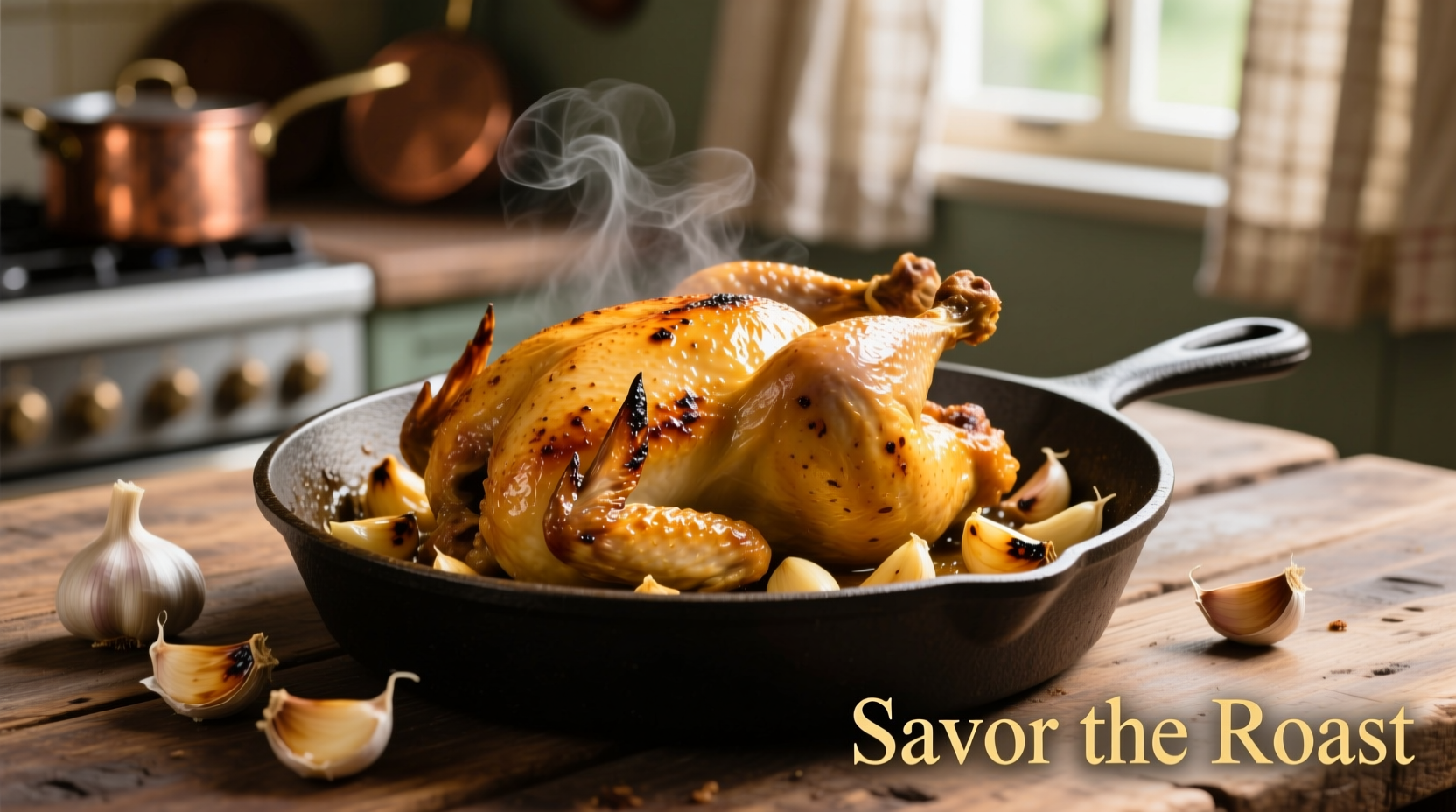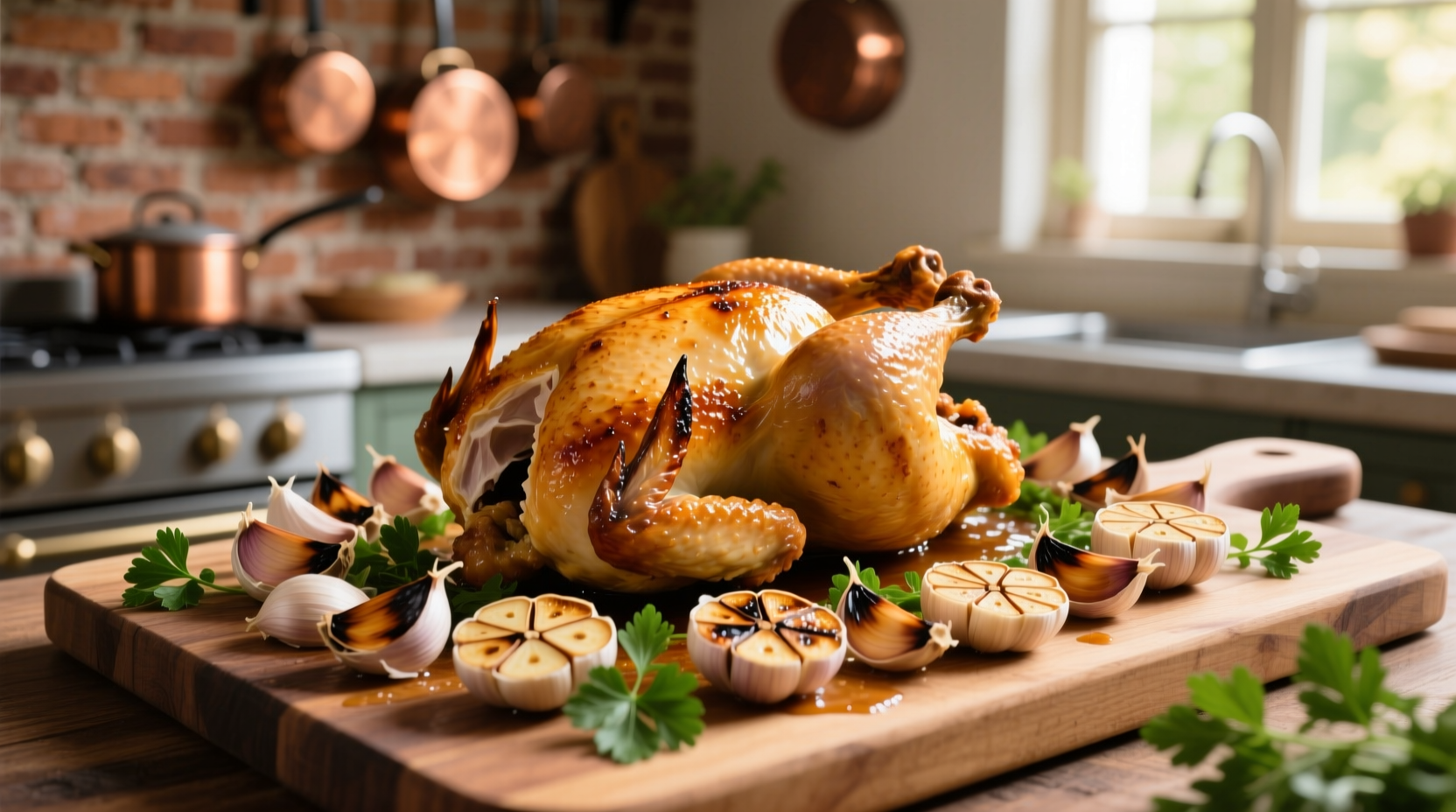Why This Garlic Chicken Recipe Deserves a Spot in Your Regular Rotation
Forget everything you’ve heard about “40 cloves” being overwhelming—this French classic delivers balanced, restaurant-quality results with minimal effort. When garlic roasts slowly with chicken, its sharp compounds transform into sweet, nutty flavors through the Maillard reaction. You’ll get tender chicken with crispy skin, creamy garlic cloves you can spread on bread, and a rich pan sauce that’s naturally gluten-free. This isn’t just another weeknight dinner; it’s a culinary technique that teaches you how ingredients evolve under heat.
The Truth Behind the “40 Cloves” Myth
Let’s clarify the biggest misconception: no traditional French recipe calls for exactly 40 cloves. Culinary historians like those at CNRS (French National Center for Scientific Research) confirm that “40” likely originated from a mistranslation of “quarante” (forty) and “quart” (quarter) in old Provençal dialects. Authentic versions from the Vaucluse region use 12-20 cloves for a whole chicken. The number varies based on garlic size and personal preference—not some magical threshold.
| Source | Actual Garlic Quantity | Historical Context |
|---|---|---|
| Julia Child's Mastering the Art of French Cooking | 18 cloves | Adapted for American kitchens; maintains Provençal essence |
| Traditional Vaucluse farmhouse recipe (1920s) | 12-15 cloves | Documented in regional culinary archives at Avignon |
| Modern Michelin-starred interpretations | 10-20 cloves | Adjusted for contemporary palates; focuses on technique |
How Garlic Transforms During Cooking: The Science Simplified
Raw garlic contains allicin, the compound responsible for its sharp bite. When roasted slowly at 375°F (190°C), allicin breaks down into diallyl disulfide and other compounds that taste sweet and nutty. Food science research from USDA’s Agricultural Research Service shows that roasting garlic for 45-60 minutes reduces its pungency by 80% while developing complex caramelized flavors. This chemical transformation is why even 20 cloves won’t overpower your dish—they become a subtle, creamy component.

Your Step-by-Step Path to Perfect Garlic Chicken
Prep Like a Pro (10 Minutes)
Start with a 3-4 lb (1.4-1.8 kg) whole chicken, patted completely dry. Remove excess fat from the cavity. Separate 15-20 garlic cloves (keep skins on—this prevents burning). Tuck fresh thyme sprigs under the chicken skin and in the cavity. Season generously with coarse salt and freshly ground black pepper.
The Critical Roasting Phase (50-60 Minutes)
Place chicken breast-side up in an oven-safe skillet with garlic cloves and 2 tbsp olive oil. Roast at 375°F (190°C) until internal temperature reaches 165°F (74°C) at the thigh. Baste every 15 minutes with pan juices. The garlic should be deeply golden and easily pierced with a fork. Key tip: If garlic browns too quickly, cover loosely with foil.
Finishing Touches That Make It Restaurant-Worthy
Transfer chicken to a platter and tent with foil. Squeeze roasted garlic cloves from their skins into the hot pan. Mash with a fork while deglazing with 1/2 cup chicken broth. Simmer 3 minutes until sauce coats the back of a spoon. Drizzle over chicken and serve immediately.
When This Technique Works (and When It Doesn’t)
This method shines with:
- Whole chickens or bone-in, skin-on pieces
- Cast iron or heavy oven-safe skillets
- Traditional French herbs like thyme and rosemary
Avoid using this approach for:
- Skinless chicken breasts (they’ll dry out)
- Gas ovens with uneven heat distribution
- Recipes requiring crispy garlic (roasting makes it creamy)
Perfect Pairings for Your Garlic Chicken Feast
Serve with crusty baguette to soak up the garlic-infused pan sauce—this is non-negotiable for authenticity. Steamed green beans with lemon or a simple frisée salad cuts through the richness. For wine, choose a medium-bodied red like Côtes du Rhône or a dry rosé from Provence. Leftovers transform beautifully: shred chicken into garlic aioli sandwiches or fold into creamy pasta.
Troubleshooting Your Garlic Chicken Like a Seasoned Cook
Burnt garlic? Your oven runs hot or you used too many cloves packed tightly. Next time, spread garlic in a single layer and check at 30 minutes.
Dry chicken? You likely overcooked it. Use a meat thermometer—165°F (74°C) is the safe endpoint.
Bland sauce? Deglaze with good-quality broth and finish with a knob of cold butter for richness.
Storage Wisdom for Leftover Magic
Cool completely within 2 hours. Store chicken and garlic separately in airtight containers for up to 3 days. Reheat gently in a covered skillet with a splash of broth—never microwave, which makes skin rubbery. Frozen, it keeps 2 months. The garlic puree freezes beautifully in ice cube trays for future recipes.











 浙公网安备
33010002000092号
浙公网安备
33010002000092号 浙B2-20120091-4
浙B2-20120091-4